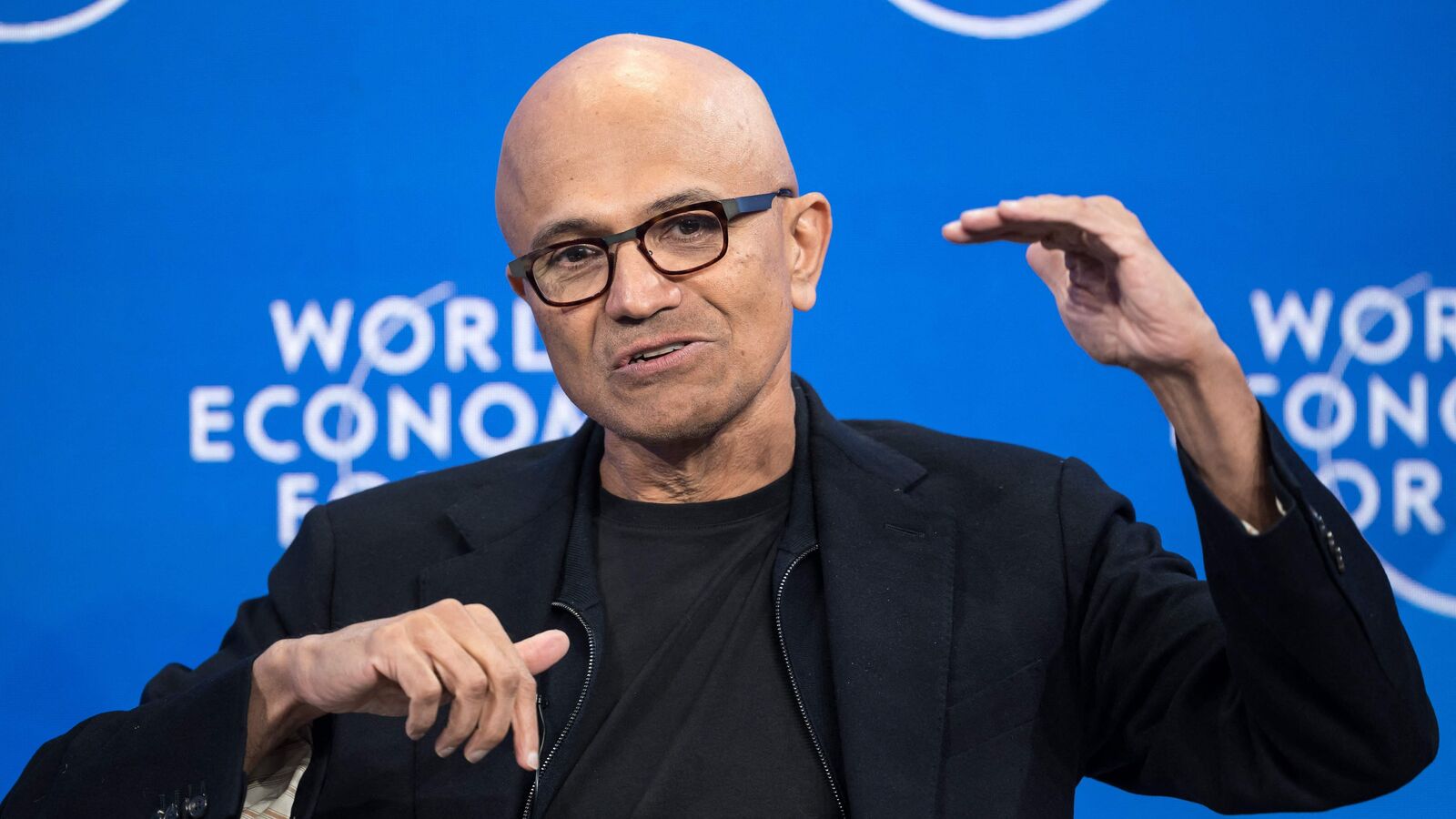Satya Nadella’s commitment to skilling up two million Indians in tier-2 and tier -3 towns to work with artificial intelligence technologies is one of many signs that India could one day become a hub for AI. Nadella says AI could contribute at least 10% of India’s GDP by the time the country’s economy hits $5 trillion (it is around $3.8 trillion now).
The Microsoft CEO’s assessment of the Indian AI opportunity concurs with that of Nasscom, which estimated in a paper published in August 2020 that India’s GDP would hit $5 trillion by 2025 and that AI could contribute $450-500 billion of this. The timelines have changed, since it’s clear India’s GDP will not touch $5 trillion by 2025, but the projection of a 10% contribution to GDP is the same as Nadella’s.
Goldman Sach released a paper in April 2023 in which it assessed the impact of AI on the global economy. This paper, too, made broadly similar projections. It estimated that about 11-12% of work in India could be automated using AI, which aligns with the ‘10% of GDP’ projections. But it said annual productivity growth in India due to AI was expected to be only 0.7%, and the 11-12% reduction in jobs could have negative effects in the short term.
However, the entry of Microsoft and other global giants that are at the cutting edge of AI changes those assessments, so there’s likely an upside beyond 10% of GDP. Any new technology causes disruption, and AI promises tectonic shifts. But new technologies also create more employment opportunities than the ones they supersede, and skilling up workers should allow for quick exploitation of this.
India also has advantages that could accelerate AI adoption and push it well beyond these projections of penetration and productivity. One big advantage is scale. India has 800 million mobile broadband users, and initiatives such as Bharatnet (which aims to link some 650,000 villages with optic fibre) and the advent of satellite broadband will ensure even remote geographies are connected to fast networks.
India has also seen the fastest 5G rollout in the world over the past 15 months. Rapid 5G adoption – there are already 130 million 5G users – and the multiple use-cases this unlocks will make AI far more useful. India is also the largest data consumer in the world – on aggregate and per-capita. The more data there is, the more quickly AI improves and the better it works.
Second, India has world-beating digital public infrastructure such as UPI. A host of services – from the government to the banking and financial sectors – are now available online. This infrastructure has allowed India to leapfrog decades on making access to banking ubiquitous. It has also enabled the direct transfer of benefits by the government (free rice and wheat, gas cylinder subsidies and so on) to low-income groups without too much leakage. Again, this digital infrastructure is amenable to AI and provides plenty of data.
A third edge that India enjoys is diversity. It has more languages than the EU, each spoken by larger populations than those of its 25-odd countries. Couple this with cheap data and smartphones and you have a recipe for success.
It’s easy to set up an operation in which people take pictures of common objects (trees, cars, billboards) and voice-label them in their mother tongues. Indeed, organisations such as Karya are already implementing such programmes. This could conceivably allow for multiple vernacular ChatGPTs with seamless translation.
India also has a robust stock market and well-developed startup ecosystem, which makes it relatively easy to raise money for new ideas. It also has a large population of ‘techies’. No wonder Microsoft, Google (it has an MoU with Maharashtra state and Gemini, its family of multimodal large language models, is available in India), Nvidia (it has partnerships with many companies including Tata and Reliance), and others are looking to embed themselves in the Indian AI ecosystem.
The final ingredient for driving AI adoption is policy. Policymakers appear to have a sense of what needs to be done to push this technology. Government working groups recommend a three-tier computing structure with 24,500 graphics processing units (GPUs). This would require about a 15-fold increase in computing capacity. The government will also have to review developments as they arise and regulate the sector appropriately to ensure that AI is not misused.
Put all of this together, and the whole should be greater than the sum of the parts. The impact of AI on the Indian economy is thus very likely to exceed expectations on GDP contribution and productivity gains.
#Indias #boom #exceed #Satya #Nadellas #expectations



